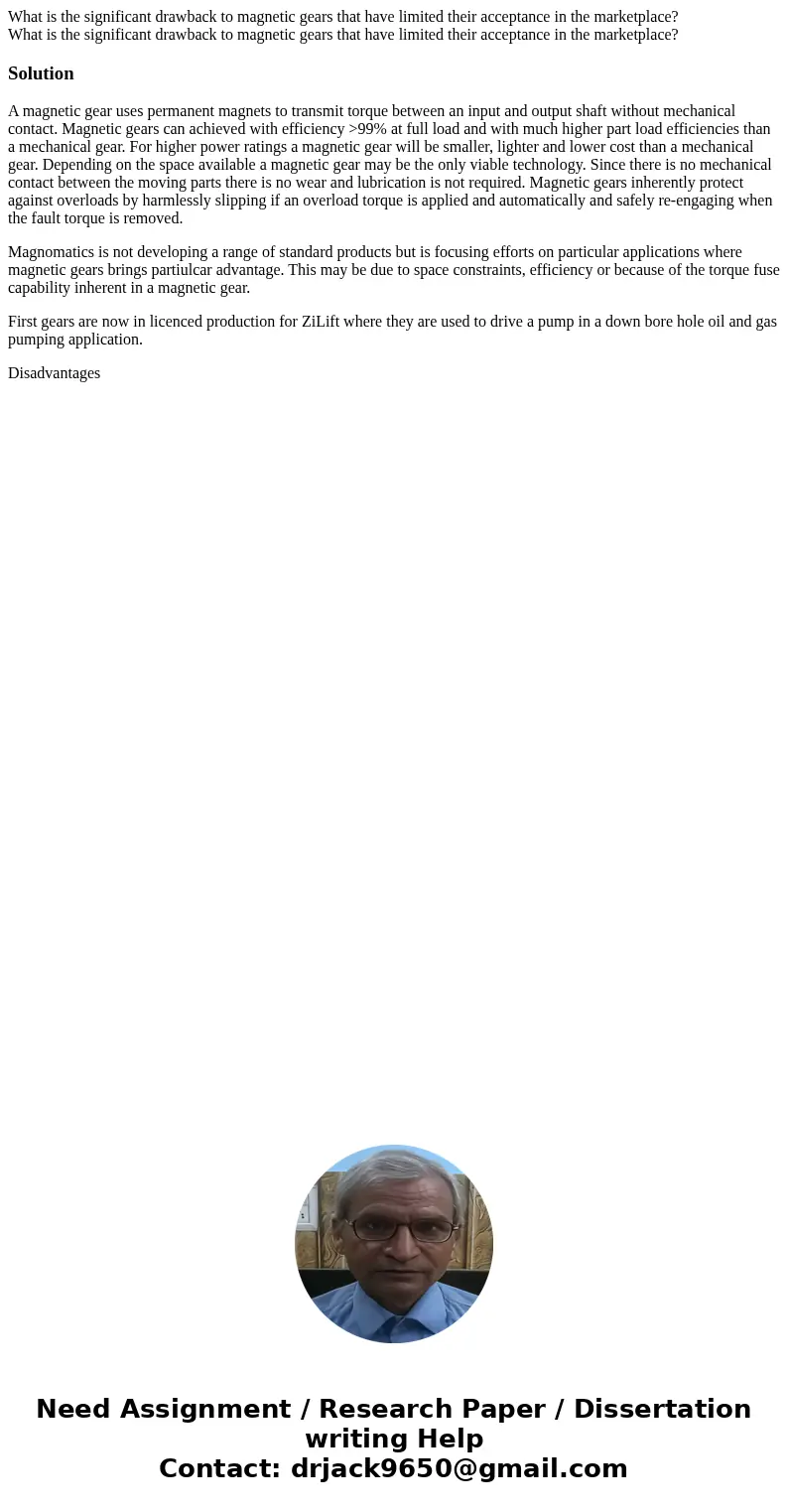What is the significant drawback to magnetic gears that have
Solution
A magnetic gear uses permanent magnets to transmit torque between an input and output shaft without mechanical contact. Magnetic gears can achieved with efficiency >99% at full load and with much higher part load efficiencies than a mechanical gear. For higher power ratings a magnetic gear will be smaller, lighter and lower cost than a mechanical gear. Depending on the space available a magnetic gear may be the only viable technology. Since there is no mechanical contact between the moving parts there is no wear and lubrication is not required. Magnetic gears inherently protect against overloads by harmlessly slipping if an overload torque is applied and automatically and safely re-engaging when the fault torque is removed.
Magnomatics is not developing a range of standard products but is focusing efforts on particular applications where magnetic gears brings partiulcar advantage. This may be due to space constraints, efficiency or because of the torque fuse capability inherent in a magnetic gear.
First gears are now in licenced production for ZiLift where they are used to drive a pump in a down bore hole oil and gas pumping application.
Disadvantages

 Homework Sourse
Homework Sourse